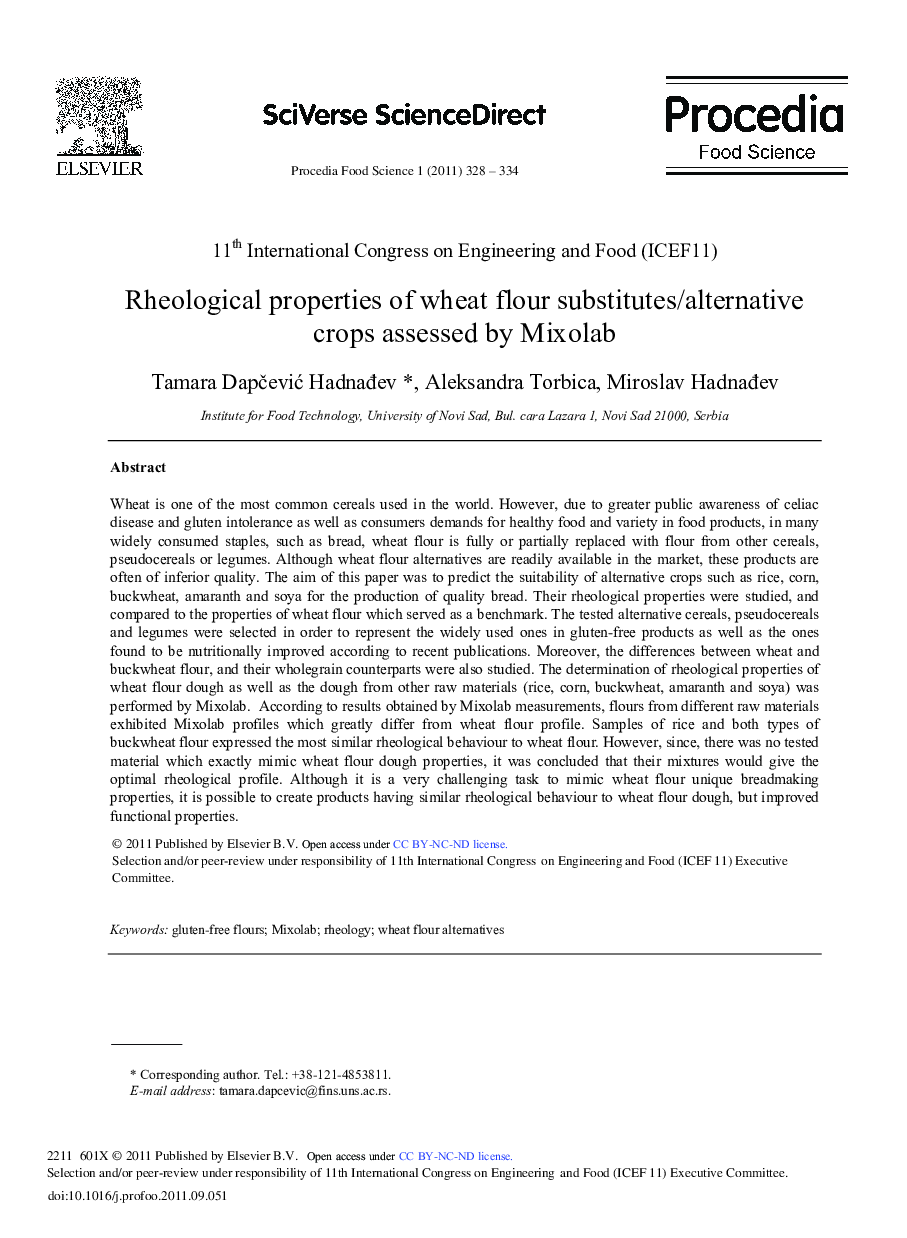| Article ID | Journal | Published Year | Pages | File Type |
|---|---|---|---|---|
| 1264959 | Procedia Food Science | 2011 | 7 Pages |
Wheat is one of the most common cereals used in the world. However, due to greater public awareness of celiac disease and gluten intolerance as well as consumers demands for healthy food and variety in food products, in many widely consumed staples, such as bread, wheat flour is fully or partially replaced with flour from other cereals, pseudocereals or legumes. Although wheat flour alternatives are readily available in the market, these products are often of inferior quality. The aim of this paper was to predict the suitability of alternative crops such as rice, corn, buckwheat, amaranth and soya for the production of quality bread. Their rheological properties were studied, and compared to the properties of wheat flour which served as a benchmark. The tested alternative cereals, pseudocereals and legumes were selected in order to represent the widely used ones in gluten-free products as well as the ones found to be nutritionally improved according to recent publications. Moreover, the differences between wheat and buckwheat flour, and their wholegrain counterparts were also studied. The determination of rheological properties of wheat flour dough as well as the dough from other raw materials (rice, corn, buckwheat, amaranth and soya) was performed by Mixolab. According to results obtained by Mixolab measurements, flours from different raw materials exhibited Mixolab profiles which greatly differ from wheat flour profile. Samples of rice and both types of buckwheat flour expressed the most similar rheological behaviour to wheat flour. However, since, there was no tested material which exactly mimic wheat flour dough properties, it was concluded that their mixtures would give the optimal rheological profile. Although it is a very challenging task to mimic wheat flour unique breadmaking properties, it is possible to create products having similar rheological behaviour to wheat flour dough, but improved functional properties.
